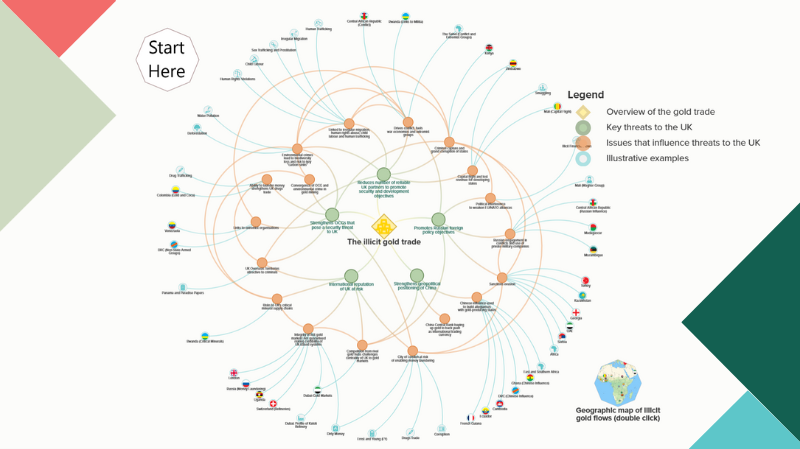Itad is at the forefront of helping organisations solve some of the world’s most complex and interlinked challenges through evidence and learning. Increasingly our work is focusing on the links between the biodiversity and climate crises and serious organised crime and conflict. For example, we have conducted research into environmental crimes, evaluated interventions to combat the illegal wildlife trade, provided bespoke training on ecological security to country programme teams, and supported cross-government strategy processes. Our work on the illicit gold trade is a particularly timely example.
The illicit gold trade
Gold prices are currently soaring in response to geopolitical uncertainty, economic instability and rising central bank demand. Gold reserves are an important component of many countries’ financial stability and economic strength, including the UK which is closely engaged in the licit gold market and is among the top five gold importers globally.
Tackling malign activity in the gold trade is vital to protect national interests domestically and internationally. The illicit gold trade deprives countries of much needed revenues, fuels corruption, undermines the rule of law, and can be linked to human rights abuses and environmental damage. It can also be used to launder money and evade sanctions, potentially funding conflicts and other illegal activities.
While governments have taken steps to combat illicit gold trade at national and global levels, the reality is that separating the licit and illicit markets is difficult and there are opportunities for illicit gold to enter licit markets.
Making sense of a complex, intersectional challenge
Addressing this deeply problematic and complex issue requires stepping back to look at the gold sector in its totality. Looking through the siloed lens of a specific sector, department, thematic team, or country programme can lead to a downgrading of the threats the illicit gold industry poses.
For this reason, Itad has published a systems map of the illicit gold trade, bringing together research and insights from the literature. The map provides an important illustrative example of what these kind of systemic threats look like and the range of challenges they present. Importantly, it highlights the complex links between the biodiversity, climate, crime and conflict crises.

A cautionary tale on critical mineral supply chains
While this systems map focuses on gold, it underscores how high-value extractive commodities with weak governance structures can become entangled in corruption, illicit finance, and environmental harm. Although gold has unique dynamics as a store of value and laundering tool, similar governance challenges may affect other critical minerals. As demand for these resources grows—driven by the current global rush to secure critical mineral supply chains for the net-zero agenda—understanding systemic risks in extractive industries becomes increasingly important.
Towards more informed strategy as crises deepen
As global climate and security crises deepen and become more urgent, it is increasingly imperative that policy makers and sector leaders understand their intersectionality and how they pose security threats nationally to the rest of the world. We offer this systems map as a tool to support more informed strategy, encourage cross-sector collaboration and guide timely, coordinated action.

